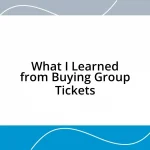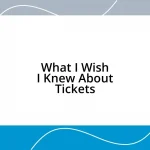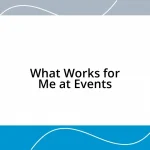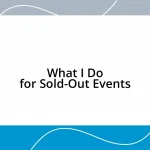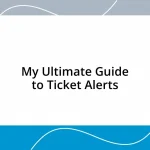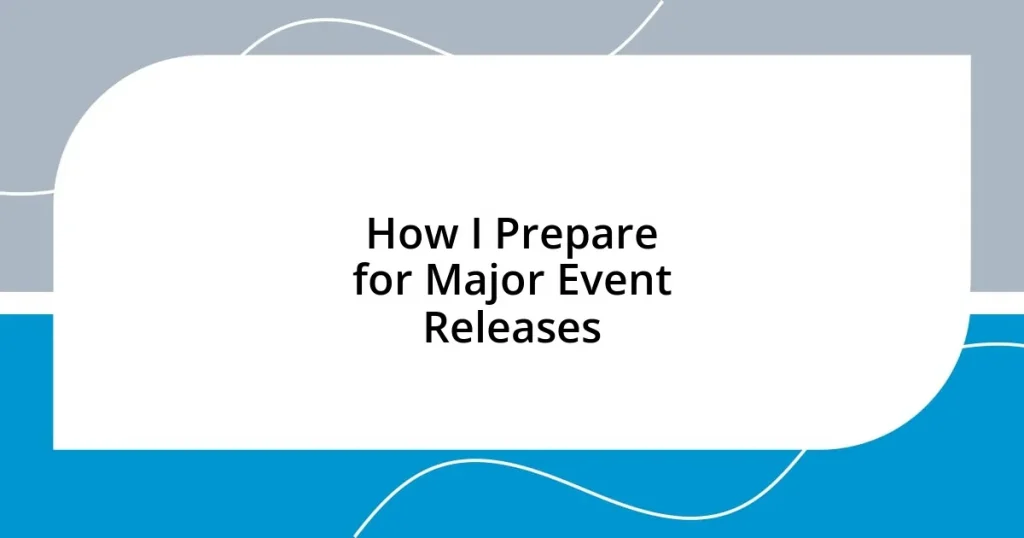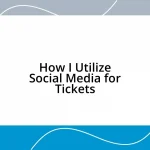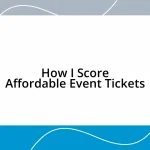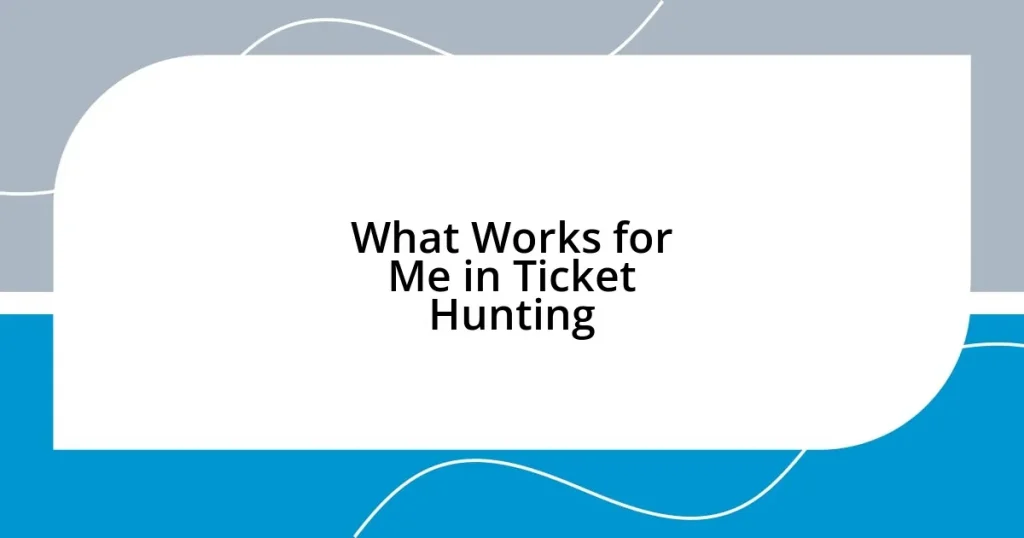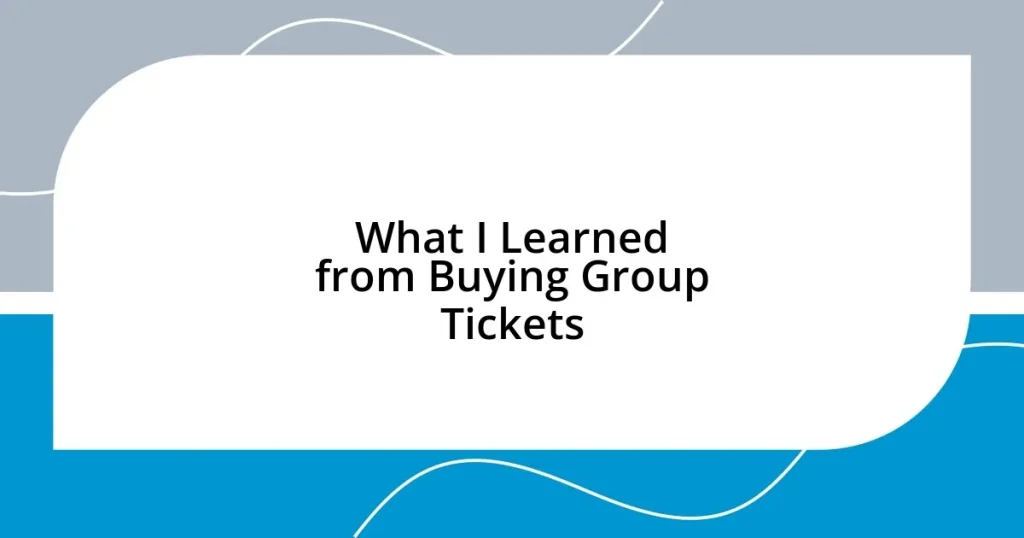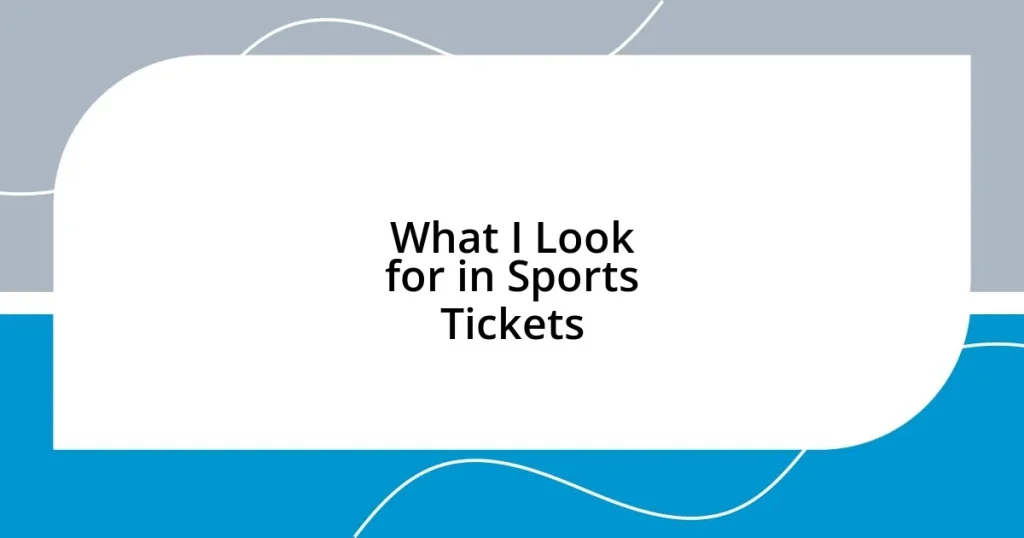Key takeaways:
- Understanding the event release process involves meticulous planning, teamwork, and defining clear goals and objectives to ensure success.
- Researching past events helps identify strengths and weaknesses, guiding improvements for future releases.
- Creating a detailed timeline allows for effective time management and flexibility to accommodate unexpected changes during event preparation.
- Engaging with the audience through social media and direct interactions builds anticipation and fosters a sense of community before and during the event.
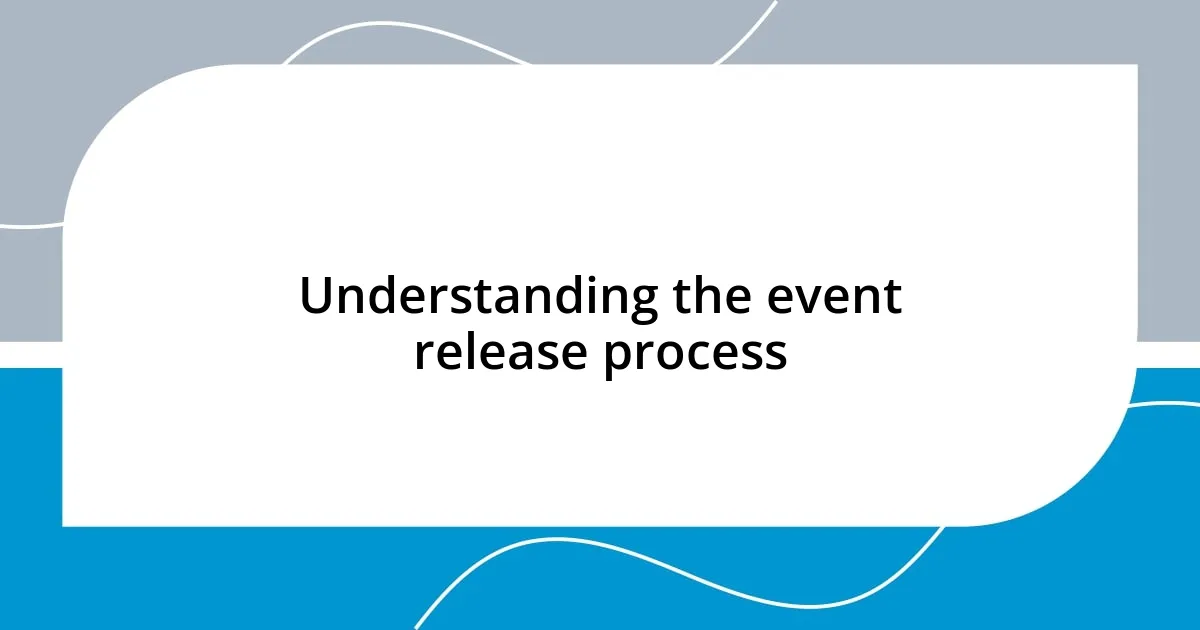
Understanding the event release process
Understanding the event release process can be quite fascinating when you break it down. I remember the first major event I attended; the thrill of anticipation was palpable. As I learned more about the process, I realized it involves meticulous planning, coordination, and a deep understanding of the audience’s expectations. Have you ever wondered how organizers manage to create that electric atmosphere?
It all starts with defining the purpose of the event. From there, a timeline is established, which includes everything from venue selection to securing speakers or performers. I found it intriguing how a well-structured timeline can be the backbone of event success. I still recall the excitement I felt watching everything come together from chaos to a beautifully orchestrated event; it’s like watching a live performance unfold.
Moreover, teamwork plays a crucial role. When I volunteered for an event, I witnessed how each department, whether marketing, logistics, or guest services, relied on one another. It was a beautiful dance of communication and collaboration. Have you considered how important it is for everyone involved to be on the same page? Seeing those relationships flourish made me appreciate the event release process even more.
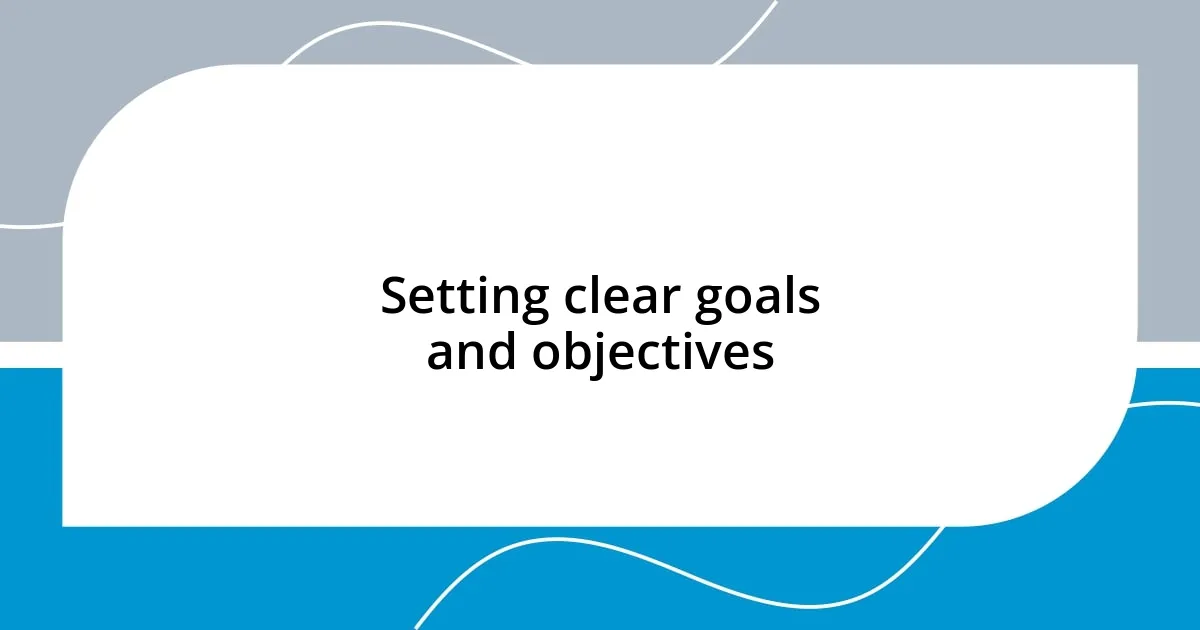
Setting clear goals and objectives
Setting clear goals and objectives is essential when preparing for a major event release. I learned this firsthand during my first event coordination experience. I remember setting specific objectives, like increasing attendance by 20%, which felt daunting at first. However, breaking this goal down into actionable steps made the entire process a lot less overwhelming.
I often find that establishing clear goals gives me a real sense of direction. It’s like having a roadmap that leads me to my destination. For instance, during that same event, I aimed to engage attendees through interactive sessions. With this objective in mind, I was able to focus my efforts on creating activities that truly resonated with the audience. This clarity enabled me to measure our success, and the team was ecstatic when we surpassed those engagement targets.
Being specific about objectives also allows for better evaluation post-event. Reflecting on those experiences, I can see how tracking metrics like attendee feedback and social media engagement became indicators of our performance. What objectives have you set in your own events? Understanding what works helps refine future planning efforts.
| Goal Type | Description |
|---|---|
| General Goal | A broad aim, such as increasing attendance. |
| Specific Objective | A measurable target, such as raising attendance by 20%. |
| Actionable Step | Concrete task to achieve the objective, like marketing campaigns. |
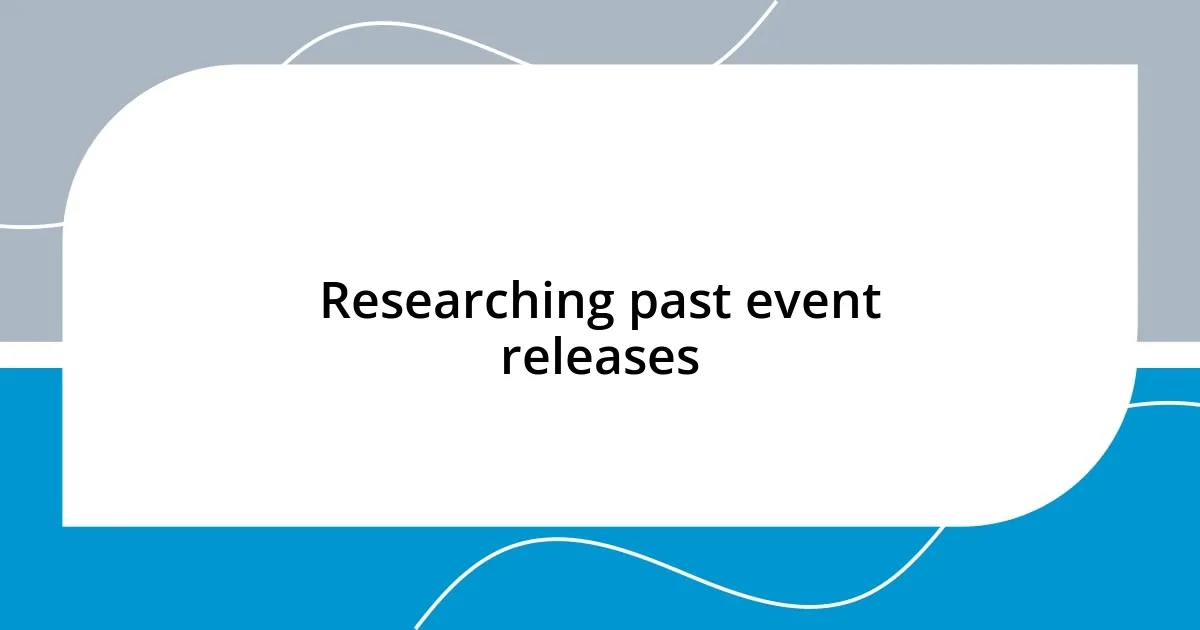
Researching past event releases
Researching past event releases can feel a bit like piecing together a puzzle. I often dive into previous events to discover what worked and what didn’t. It’s fascinating to see how different elements come together, as each event is a learning opportunity. For instance, I remember examining a major conference where attendees expressed dissatisfaction with the breakout sessions. This feedback drove home the importance of gathering insights to refine future strategies.
When looking at past events, I focus on various aspects to gather useful insights:
- Audience Feedback: What did attendees love? What left them wanting more?
- Logistical Challenges: Were there any issues with timing or resources that could have been managed better?
- Event Engagement: How did participants interact? Were there opportunities that enhanced or detracted from the experience?
- Social Media Reception: How were the events discussed online, and what did that reveal about public perception?
- Improvements Noted: What suggestions did organizers receive for future editions?
These points often spark a lightbulb moment for me, showing how even minor tweaks can yield significant improvements. By analyzing these details, I can approach my own events with a more informed perspective, making every release a step up from the last.
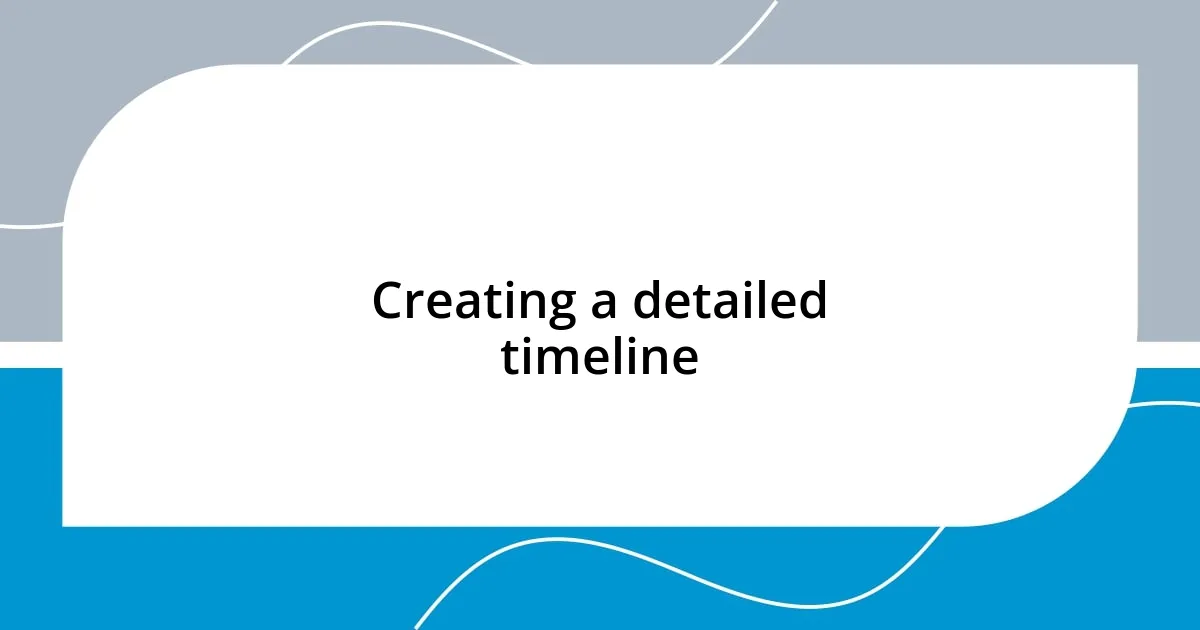
Creating a detailed timeline
Creating a detailed timeline is something I find immensely beneficial in any event preparation. I recall one particular instance where I had multiple moving parts to coordinate for an annual festival. By constructing a timeline, I broke down the process into manageable tasks, ensuring I didn’t overlook any critical components. It was almost like drafting a playlist—every song in the right order made for an enjoyable flow, while missing one could throw off the entire vibe.
Time management is crucial, and when planning my timeline, I always consider key milestones. For example, I mark the dates for key decisions—like venue booking and promotional campaigns—alongside deadlines for smaller tasks, like securing speakers or vendors. I sometimes ask myself, “What do I need to accomplish this week to stay on track?” This question helps me prioritize, ensuring I’m making consistent progress without feeling overwhelmed.
In my experience, it’s essential to build in flexibility within the timeline. I remember when a last-minute change in venue came up for a project, and my detailed timeline took a hit. But because I had allowed for some wiggle room, I could rearrange tasks without too much stress. How do you accommodate unexpected changes? A well-structured timeline not only keeps one organized but provides a safety net, allowing for adaptability when things don’t go according to plan.
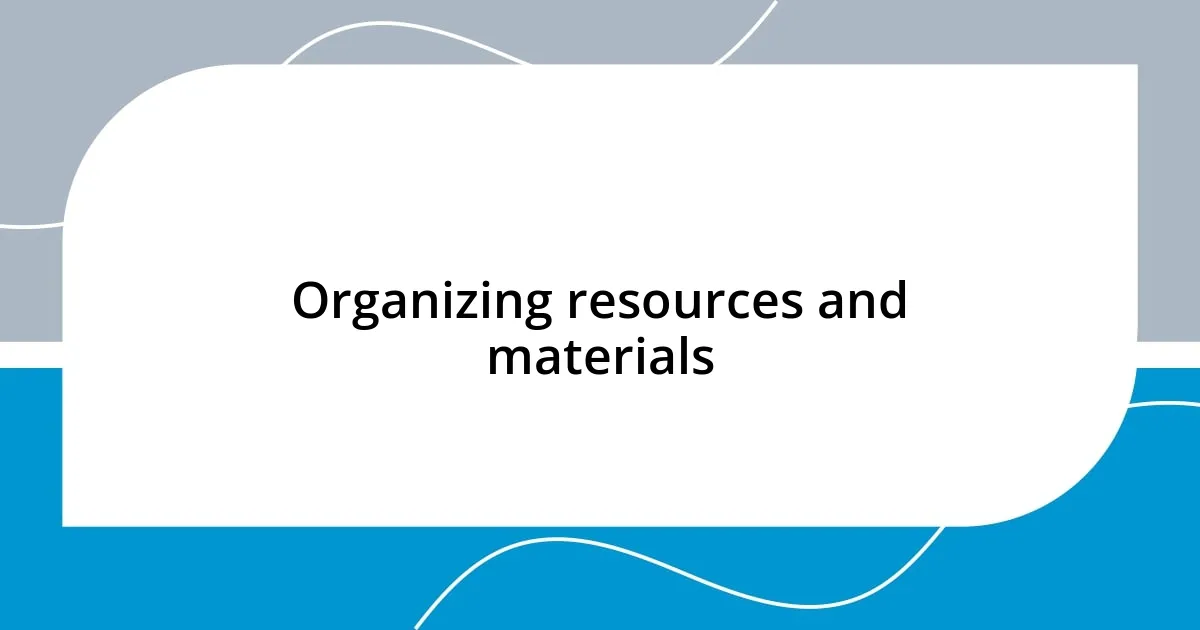
Organizing resources and materials
Organizing resources and materials is a key part of my event preparation strategy. I often start by creating a comprehensive list of everything I need, from promotional materials to equipment. I remember one time when I overlooked the importance of having enough tech support on-hand for a launch event. It was nerve-wracking to see attendees struggling with tech issues—and it made me realize just how vital it is to have all resources cataloged and easily accessible.
I find that I get the best results when I categorize these materials by priority and functionality. For instance, I’ll separate items into “must-haves” and “nice-to-haves.” During one particularly ambitious festival I organized, I spent a weekend sorting through everything from sound equipment to handouts, ensuring all materials were labeled and packed ahead of time. This level of organization makes it easier to delegate tasks, because anyone helping out knows exactly where to find what they need. Have you ever felt the panic of searching for an essential item last minute? I certainly have, and that feeling drives my desire to stay organized.
An often-overlooked aspect of gathering materials is testing them in advance. I like to rehearse with all my tech gear to ensure everything operates smoothly before the big day. I still remember the tension during a setup when a valuable video didn’t play as expected; I was so relieved I had already checked it prior. Preparing ahead like this not only helps prevent any last-minute glitches, but it also boosts my confidence going into the event. By investing the time upfront in organizing and testing, I can shift my focus to creating an engaging experience. How do you ensure your resources are ready to go?
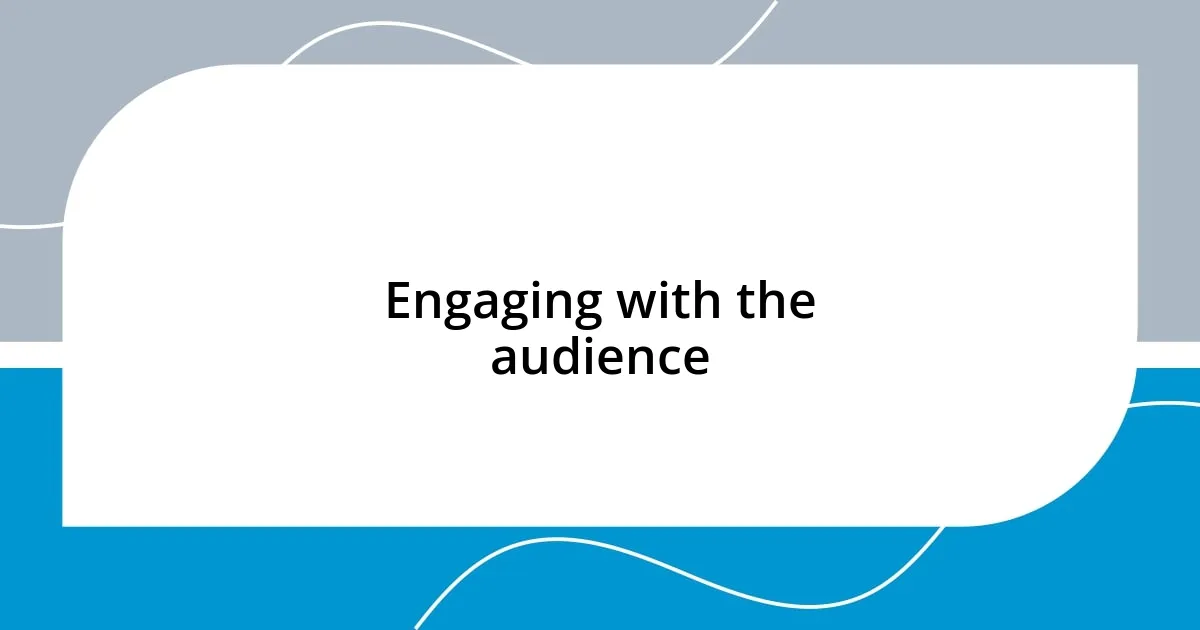
Engaging with the audience
Engaging with the audience is a deliberate effort that begins long before the event itself. I remember a time when I decided to create a buzz via social media weeks ahead of a major product launch. By sharing sneak peeks, countdowns, and interactive polls, I could literally feel the excitement building. It wasn’t just about informing people; it was about fostering a sense of community around the event. Have you ever noticed how anticipation can transform a typical audience into an enthusiastic group? That’s the power of engagement.
Throughout my preparation, I always seek out opportunities for direct interaction. One year, I organized a pre-event Q&A session online where attendees could ask questions directly to the speakers. The genuine excitement in the virtual room was infectious! It not only made them feel valued but also gave me timely insights on what truly interested them. I find that listening to my audience often reveals hidden gems of information that can refine the event’s direction. How often do you check in with your audience before the big day?
From my experience, personal storytelling can be a game-changer in connecting with the audience. During a recent workshop, I shared a humorous mishap from a past event that resonated well with everyone present. Laughter is a wonderful bridge! By being relatable, I witnessed audience members lean in more, ready to absorb what was coming next. I genuinely believe that fostering this kind of connection transforms a standard event into a memorable experience. Have you tried sharing your own stories with your audience? They often hold the key to building rapport and enhancing engagement.


